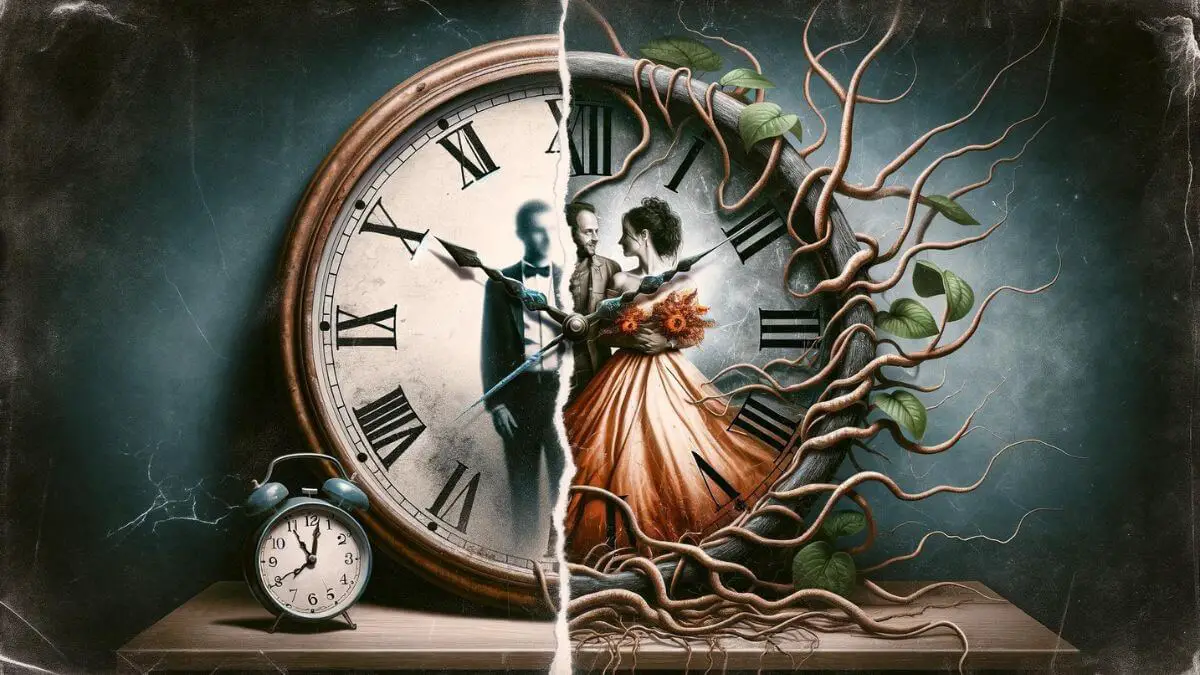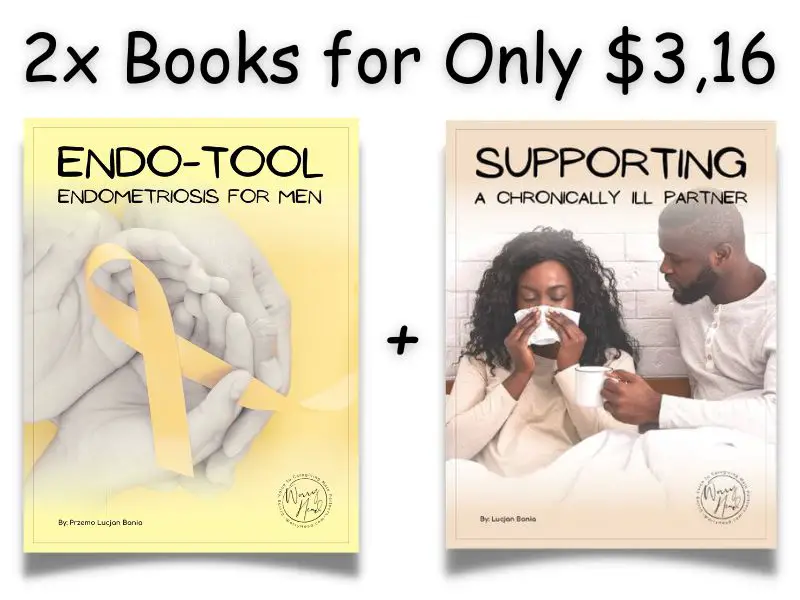Endometriosis Divorce Rate (Updated 5th Mar 2024)
In my journey to understand the impact of endometriosis on marital relationships, I encountered limited but insightful data linking the condition to an increased endometriosis divorce rate, especially where it influences sexual intimacy and satisfaction.
My own story as a husband, alongside my wife who endures stage 4 deep infiltrating endometriosis but also fibromyalgia, defies these odds, showcasing the power of unwavering support and love in the face of immense challenges.
Despite her fears of being a burden, my commitment has never wavered, illustrating that with understanding and care, it’s possible to navigate even the toughest challenges together.
The divorce rate among couples where one partner has endometriosis is reportedly higher than average reaching up to 75%. While the exact figures vary, studies suggest that the strain of managing chronic pain, fertility issues, and emotional distress associated with the condition can contribute to marital strain.
This is where I come in. My blog is a statement of my knowledge and experience in loving a woman with a chronic illness. Scroll down and let’s delve deeper into this topic…
Understanding Endometriosis As a Man
As a man deeply invested in the well-being of my wife, who battles endometriosis, I perceive this condition not just as a medical issue but as a profound life challenge that we face together.
Witnessing her endure the relentless pain and the emotional toll it takes is heart-wrenching. I see endometriosis as a test of our bond, resilience, and compassion. It’s a call to action for me to be more understanding, patient, and supportive.
It’s about learning, adapting, and standing firm by her side, no matter how tough the journey becomes.
Understanding endometriosis as a man is different for every guy. I’m deeply interested in this topic and this is why I run this website. I want to help other men understand what endometriosis is, what impact it has on their women, and how they can deal with the new normal.

How Endometriosis Affects Relationships?
Living with someone who has endometriosis has opened my eyes to the profound impact it can have on a relationship. Beyond the physical pain, it brings emotional and psychological challenges that affect intimacy, communication, and the overall dynamics of our partnership.
Being patient can be challenging when conversations predominantly revolve around my wife’s endometriosis. It often feels like my own feelings and experiences are sidelined, creating a sense of isolation within our shared struggle.
This imbalance can lead to feelings of being overlooked or neglected, intensifying the emotional toll on our relationship. It’s a delicate balance to support her while also finding space for my own voice and well-being.
This imbalance in our conversations, where my experiences and feelings feel secondary to her endometriosis, might mirror a broader issue contributing to higher divorce rates among couples dealing with this condition.
When one partner feels consistently marginalized, it can erode the mutual understanding and support that are crucial for a healthy relationship, potentially leading to a breakdown in communication and intimacy.
Studies of the Endometriosis Divorce Rates
Studies indicate that chronic illness significantly influences marital breakdowns, with statistics suggesting that 75% of marriages impacted by chronic illness may end in divorce. This effect can vary depending on which spouse is ill, with the risk of divorce potentially increasing when the wife is the patient.
Various factors, such as altered gender roles, the caregiving burden on the healthy spouse, and differing support systems between genders, might contribute to this dynamic.
Very few studies examined the impact of endometriosis on women’s partners, especially us, men.
We often feel marginalized, sidelined, unheard, and unsupported. There was never a written guide for us on how to cope with the new normal while loving a woman with endometriosis. Women have so much information and tips provided to them by their fellow endo-sisters.
- But what about endo-brothers?
- Where is our guide?
Well, in 2022, I wrote with the help of my beautiful wife a book called “Endo-Tool: Endometriosis for Men” which as the title suggests is dedicated to men who are in a relationship with women who have endo. In addition, I also wrote another book called “Supporting a Chronically Ill Partner”. You can buy both of the books today for as little as $3.16!
But going back to the subject…
When I looked at a study published in the Journal of Psychosomatic Obstetrics and Gynecology, I found that many women with endometriosis were more likely to report sexual dysfunction and lower sexual satisfaction than those without endo. Another study published in the Journal of Sex & Marital Therapy found that women with endometriosis seem to report more distress and lower relationship satisfaction than women without the condition.
Depending on the stage and type of endometriosis, the variety of endometriosis symptoms, and many other factors, it may or may not contribute to relationship problems and divorce.
Every couple is different, and every couple deals with challenges in their way. But what I can openly say is that I am living proof that by being a supportive husband to my wife, we could manage endometriosis and maintain a very healthy relationship. And you can too!
Not knowing what the supporter feels makes women upset and angry because they think that their men don’t care about them. In some cases, it may be true, but the majority of us truly love our women. We just feel a bit lost and don’t know what to do. Our instinct tells us to fix things. Even though we can’t fix endometriosis, it’s in our nature to keep trying to do something about it.
What Do I Know About the Endometriosis Divorce Rate?
As I already mentioned, my wife and I both lived through it. We still do… She asked me on five occasions to divorce her believing that I would be happier with another, healthy woman.
Numerous times, she expressed her fear over not being able to give me children, have a family, proper career, and even said that she never feels like a proper woman, not being able to give me the sexual satisfaction most couples experience being healthy.
As for me, seeing my wife’s emotional struggles, I never felt more love towards her. Loving a woman with endometriosis is challenging but it can be very rewarding!
Saying that, I found limited information researching divorce rates among couples where one partner has endometriosis. Naturally, studies suggest that endometriosis hurts relationships, mainly from a point of view of sexual desire and sexual function, which leads to a higher divorce rate.
I still remember feeling frustrated during our intercourse. She pulled away but never wanted to tell me she was in pain. Instead, she sacrificed herself trying to give me pleasure. I knew something wasn’t right, she kept pulling away, and I was becoming tired and upset.
However true, today, this is an old story. Our intimacy grew. We became closer than ever before, even closer than when she was her healthy self, full of vigor, a sexy dancer. Endometriosis destroyed her dancing career and almost destroyed our marriage.
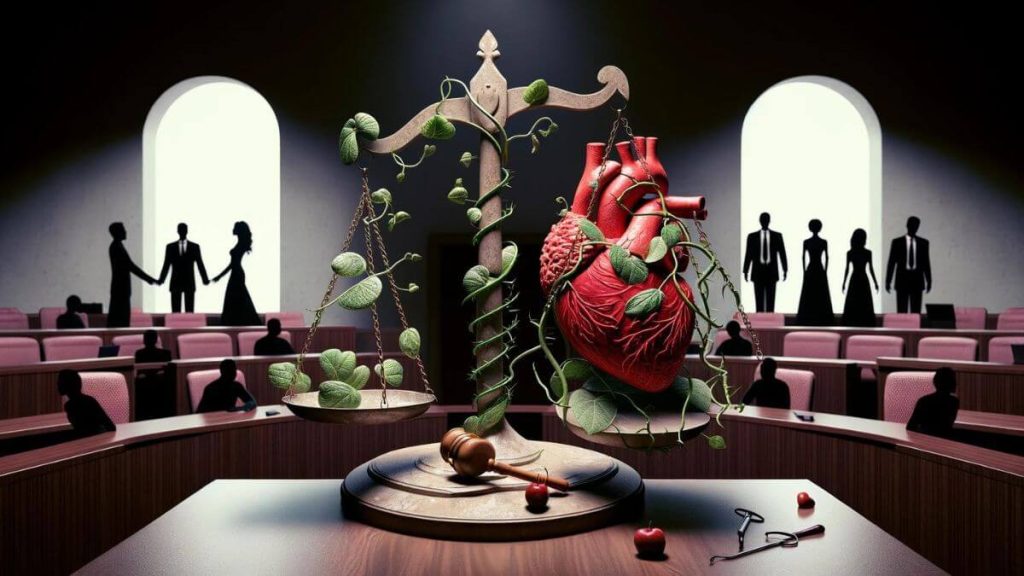
The Impact on Mental Health
Delving into the topic, it’s apparent that the strain endometriosis places on marriages can sometimes lead to an elevated divorce rate. The specifics are nuanced, with various studies offering different insights, yet the consensus points towards a notable impact.
Experts say that chronic illnesses increase the risk of divorce from the norm of 40-50% to as much as 75%. Saying that amongst couples with endometriosis, the divorce rate rises because there are other issues that often occur, such as loss of sex life.
Based on my marriage I’ve learned two things:
- Men struggle to cope with new adjustments in their lives and leave their women.
- Women feel guilty for their partner’s loss and ask their husbands to leave them.
My wife suffers from endometriosis, but she also has fibromyalgia. Both chronic conditions greatly impact her mental health. She lives with constant anxiety, occasional depressive states, and self-harm episodes, she also developed obsessive-compulsive disorder, OCD for short.
Having a chronic illness impact mental health is challenging already, but with a chronic condition like endometriosis, the divorce rate rises higher than in other conditions.
The affected women have a higher risk of being infertile, not to mention having painful sex. Pain during sexual intercourse can be unbearable for women with endo. They feel guilty every time they refuse sex, as their pain is too much to bear.
The Financial Strain of Endometriosis
The financial toll of endometriosis caused by not being able to work consistently due to flare-ups and fatigue adds up to the emotional turmoil.
Endometriosis can have a significant financial impact due to its symptoms like flare-ups and chronic fatigue, making even remote work challenging for my wife. These symptoms can lead to reduced hours or the inability to work, affecting our household income.
But there’s more! Balancing my work while taking time off to care for her during her worst days adds another layer of difficulty, as it not only affects our earnings but also places emotional and financial stress on our marriage.

Statistical Overview of Endometriosis Divorce Rates
Precise numbers are hard to pin down, but anecdotal evidence and qualitative research suggest a significant correlation between endometriosis and marital dissolution. The exact figures vary, but the trend is undeniable, emphasizing the need for further investigation.
Studies have shown that women diagnosed with serious chronic illness are significantly more likely to experience separation or divorce than their male counterparts. Specifically, women are 6 times more likely to find themselves alone shortly after such a diagnosis.
This disparity is not just a number but a reflection of the societal roles and expectations placed on men and women, particularly in the context of caregiving and emotional support within marriages.
Men, traditionally not as accustomed to the caregiver role, may find the adjustment particularly challenging, contributing to the higher rates of leaving an ill spouse. This phenomenon underscores the need for greater awareness and support structures for couples navigating serious health issues to help mitigate the added strain of potential marital discord on top of health challenges
Factors Contributing to Higher Divorce Rates
When it comes down to endometriosis, the reasons are multifaceted, ranging from the direct effects of chronic pain and infertility to the more insidious emotional and financial strains. The condition can disrupt intimacy, communication, and shared life plans, often placing an unsustainable burden on both partners.
Several factors contribute to the higher divorce rates among couples where the woman is chronically ill:
- Altered Gender Roles: Traditional gender roles can be significantly disrupted when a woman becomes chronically ill. Men may struggle more with adopting caregiving responsibilities traditionally associated with women, leading to stress and potential marital breakdown.
- Caregiving Burden: The physical and emotional demands of caregiving can be overwhelming, especially if the man is not accustomed to such roles. This sudden shift can create stress and resentment, contributing to marital discord.
- Emotional Disconnect: Men might find it challenging to provide the emotional support needed, leading to feelings of isolation and abandonment for the ill spouse. This lack of emotional intimacy can further strain the marriage.
- Social Support Systems: Women typically have broader social support networks than men. When a woman becomes ill, she might turn to these networks for support, potentially leaving the husband feeling sidelined or inadequate.
- Economic Strain: Chronic illness can lead to financial stress due to medical expenses and potential loss of income if the woman was a contributing earner. This financial pressure can exacerbate existing marital issues.
- Physical and Emotional Toll: The physical symptoms of the illness, coupled with emotional distress, can lead to a decline in marital satisfaction. Both partners might feel helpless and frustrated, leading to a breakdown in communication and intimacy.
- Longevity of Marriage: The length of the marriage can also play a role. While longer marriages might have a stronger foundation to withstand the pressures of chronic illness, newer marriages might not have the same resilience.
Understanding these factors can help in identifying potential support and interventions for couples facing the challenges of chronic illness, aiming to strengthen their relationship rather than succumb to the pressures that might lead to divorce.
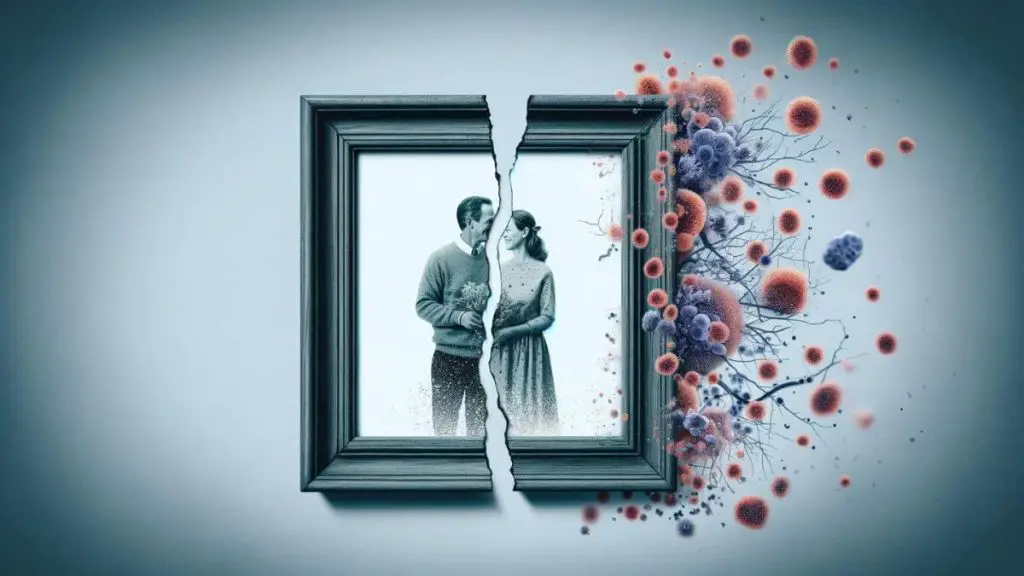
Male Partners of Women with Endometriosis
Nobody talks about men who feel the loss. They are more likely to have an affair. That itself leads to betrayal and broken hearts. But the impact of endometriosis on the couple’s sex life and a higher risk of infertility isn’t all married people have to deal with.
The emotional, mental, and psychological toll this chronic illness has on the couple is another reason for the higher endometriosis divorce rate.
As I already mentioned earlier, my wife was greatly impacted by endometriosis. When her career as a dancer, choreographer, and performer ended, she developed anxiety over the unknown future, panic attacks, and depression caused by the trauma of the loss of her health and dancing business.
During the operation, my lovely wife got an infection during recovery from laparoscopy. The original diagnostic surgery went very well but revealed stage 4 deep infiltrating endometriosis.
It causes my wife Irritable Bowel Syndrome (IBS for short) because endometrial tissue reached her to her bowel. In addition to that, she developed various kinds of food intolerances.
She couldn’t eat dairy products, red meat, sugar, and most fruits, and she had to cut down on caffeine. For an Italian woman like my wife not having her beloved coffee was a big deal. Today, she adjusted to it and has just half a shot of cappuccino a day. But let’s not forget all these lovely kinds of food she can’t have!
Endometriosis made her diet extremely restricted and difficult for us to go to a restaurant and order just anything. Going out has to be planned. I also always ordered food that she could eat as a secondary option in case her plate of food was too spicy or too oily.
The menu isn’t designed for women with endometriosis.
Also, going to a party with other people isn’t an option anymore. Even friends don’t understand what we are going through. We have to cancel some of our meetings because of the endometriosis flare-ups that unexpectedly occur.
Saving marriage from divorce amongst couples with endometriosis isn’t easy. Everything seems to work against the affected couple.
Even physically healthy relationships have problems. But endometriosis is a much bigger deal if there is no communication and understanding between both of you.
One of the ways to help my wife was to educate myself about her disabling condition. I found many books in my time, but one stood out the most. It was “Endometriosis – Healing from the Inside Out” which you can check and access below.
This book dives deep into the whole topic of using a vast range of safe natural therapies and nutrition to help manage endometriosis.
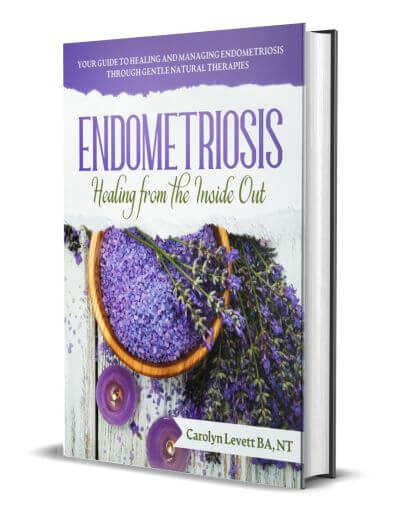
Sex with Endometriosis
Endometriosis often affects sexual function and causes pain during intercourse, which can impact sexual activity and intimacy for the women who are affected. The severity of endometriosis symptoms can vary from woman to woman, and not everyone with endometriosis will experience sexual difficulties.
But when they do, pain during intercourse (also known as dyspareunia), can be caused by the physical presence of endometrial tissue outside of the uterus, as well as inflammation and nerve sensitivity in the surrounding tissues. The location can vary from person to person depending on the type and stage of endometriosis.
Endometrial tissue can also impact sexual function, as it can affect the positioning of organs and the ability to move comfortably during intercourse.
So, my advice would be, if your partner experiences pain during intercourse due to endometriosis, there are several options for managing her symptoms. These include:
- Using pain relief medication such as nonsteroidal anti-inflammatory drugs (NSAIDs) or muscle relaxants
- Engaging in sexual activities that do not cause pain, such as non-penetrative sexual activity or using different positions
- Using lubrication or vaginal dilators to ease discomfort
- Seeking medical treatment for endometriosis, such as hormone therapy or surgery, can help reduce the size and severity of endometrial tissue growth and associated symptoms.
Remember to talk to the BSGE endometriosis specialist if she experiences pain or other sexual difficulties related to endo. The doctor can help your partner develop a treatment plan that is tailored to her needs and symptoms.
In addition, seeking counseling or support from a mental health professional can be helpful in managing the emotional impact of endometriosis on sexual function and intimacy.
Sadly, some women’s endometriosis pain can make physical intimacy unbearable to the point it even breaks up marriages. That is because endometriosis can affect a small space behind the cervix and lower uterus. When endometriosis gets into that space, it widens it causing extreme pain.
It also causes nerve endings to grow and the tissues to get inflamed. The tissue around the area becomes stiff. If that area is hit during intercourse, pain can be really excruciating!
And can also last for days, because nerves become irritated to the point that they keep firing over and over, sending impulses to the brain.
Apart from the nerves, endometriosis also causes fluids to leak from the tissues, which results in spreading, causing inflammation in the pelvic area. The female reproductive organ is supposed to be elastic. But endometriosis causes stiffness and pulls on other structures in the pelvis, which can a woman very uncomfortable.
Aside from fertility issues, a sexless life is one of the primary reasons why couples with endometriosis struggle to sustain their marriage, and therefore the endometriosis divorce rates are high.
but here’s what I think – sex isn’t only about penetration!
Sex is wonderful because you can explore and experiment. By searching and discovering new things, your sex life doesn’t have to be boring. I say that because (unfortunately) for the majority of men sex is about the finish and release.
Women prefer more time, preparation, a more intimate touch, and emotional support. For them, it isn’t about the penetration but the experience as a whole, intimacy, and closeness.
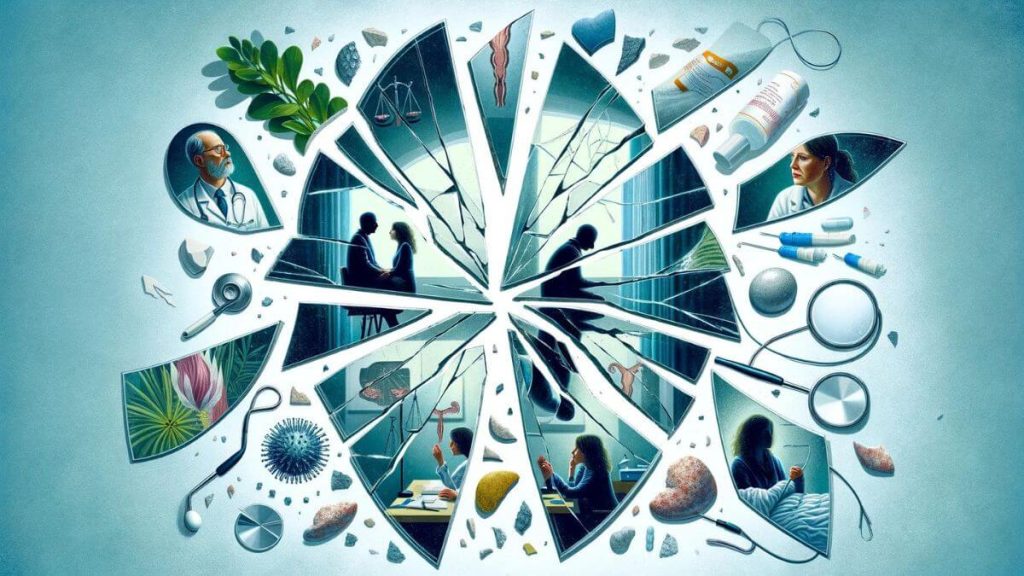
Some Useful Tips on Endometriosis and Marriage
Here are 10 tips that can help keep your intimate relationship healthy:
- Get proper medical treatment.
- Don’t put your relationship on hold.
- Talk it over.
- If something hurts, stop doing it.
- Try new things.
- Wait until you’re ready.
- Change positions.
- Let your body do the talking.
- Keep working at it even after surgery.
- If you need more help, find it.
Additionally, I give you 15 caregiving tips on how to support a partner with a chronic illness:
- Find support.
- Get help.
- Make time for yourself.
- Be kind to yourself.
- Identify personal barriers.
- Communicate.
- Try to be patient.
- Don’t stop learning.
- Remember your loved one.
- Approach caregiving with your heart.
- Be respectful.
- Be sensitive.
- Trust in your ability to be a caregiver.
- Know your limits.
- Try not to be judgemental.
I hope you found here useful information about the endometriosis divorce rate and how to save your marriage from divorce. I wish you both luck and cross my fingers for you.
Take good care of yourselves!


About Me
Hi, I’m Lucjan! The reason why I decided to create this blog was my beautiful wife, who experienced a lot of pain in life, but also the lack of information about endometriosis and fibromyalgia for men…
